I grew up on my neighbours’ farm in the Lake District, England and spent lots of time as a child helping the adults outside with the sheep, lambs and cows in the pouring rain. Later on, I’ve lived and worked in Manchester, U.K. for over a decade, which is renowned for it’s grey drizzle and rain-soaked winters – it’s safe to say that in the North West of England I can’t avoid shooting film in the rain!
For my first article about gear theory, I want to talk about how I shoot film in the rain – and how it affects my approach to gear, and my approach to taking photos in the most miserable of weather conditions. As you’ll gather, I have a background connection with rain and wind, and I feel like this weather type is not often captured enough on film. I wonder if this is more because of the risk of damage to our equipment, or the need to adapt our usual practices to adjust to the conditions. This can often mean shooting out of our comfort zone, making decisions such as pushing film, choosing B&W or Colour Film, and changing how we approach taking our photos. These changes are not often the most comfortable, and can make us feel unsure about how our results will fit in with the rest of our work, or might make us nervous about messing things up and getting bad results that lose us precious frames (and money!)
Now this is not a ‘How To’ or a ‘Guide’ because I would consider those relatively objective or instructional articles. No, this is definitely just a personal theory, and gear philosophy on the different approaches I take for different situations. There are no right or wrong approaches to photography, and this is just what I find useful to getting the results I want in a tricky situation.
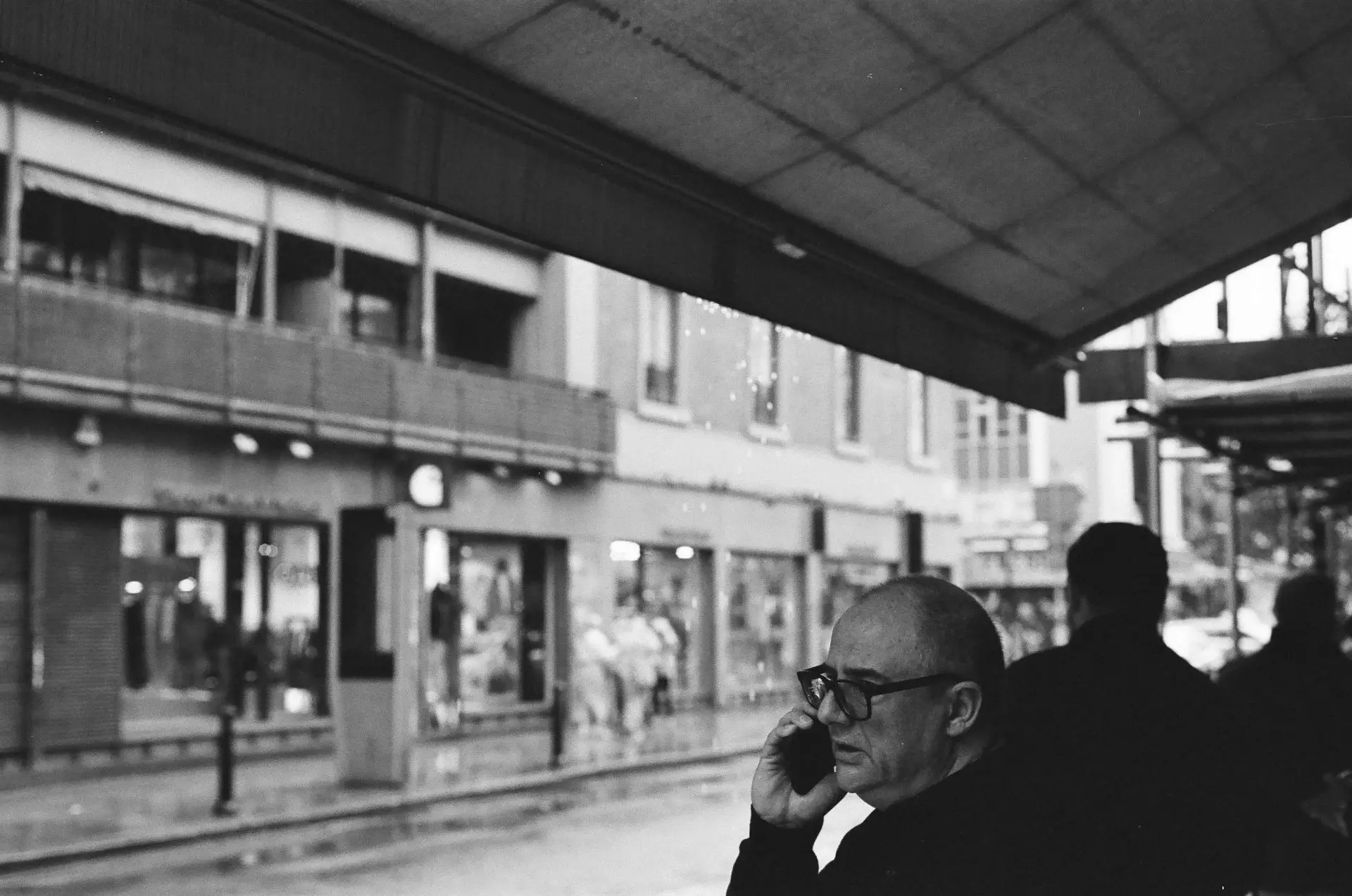
Why even bother?
I mean seriously, why not just stay on the sofa with a mug of tea watching The Repair Shop? Later in the day, when it’s already dark before you’ve even finished work, and the rain is pouring down, that seems like a pretty good time to not go outside and take photos right? The problem is, that is my reality a lot of the time during Autumn/Winter in the North West of England. It really does just rain… a lot! So should I only ever take photos on film during Spring/Summer? No way!
Often I end up only having time to go out for a photowalk on the weekend, and this means I just put up with the reality of whatever conditions or light quality there is on the day and then adapt. More importantly, if I go and shoot film in ‘less than ideal’ conditions then I’m capturing something about my own experience. Using rain to add its own character to your photos is nothing new. For example, you can read about how French-Hungarian photographer Brassaï would use rain and fog to diffuse harsh light from the street-lamps in Paris, giving a mysterious, moody atmosphere to his photos. Later, the American photographer Saul Leiter would go out in all weathers to capture New York City on rolls of expired Kodachrome. Here you can watch how he gave us mesmerising, abstract, and impressionistic photos that captured his own experience of that place.
When it is raining you often also get puddles, reflections, and added texture to your scenes. These can be great for including in your pictures, and might even provide essential to the composition of your photo. It is also amazing to see how people change when it starts raining too. Suddenly folks are rushing to their destination, or sheltering under cover, and all sharing the same experience of getting caught in the rain. Their experience is also my experience, and so as a photographer I feel less ‘othered’ and more part of the same scene. For an example, see Faizal talk about his experience of shooting New York’s Chinatown in the rain with a Fujifilm X100V here.
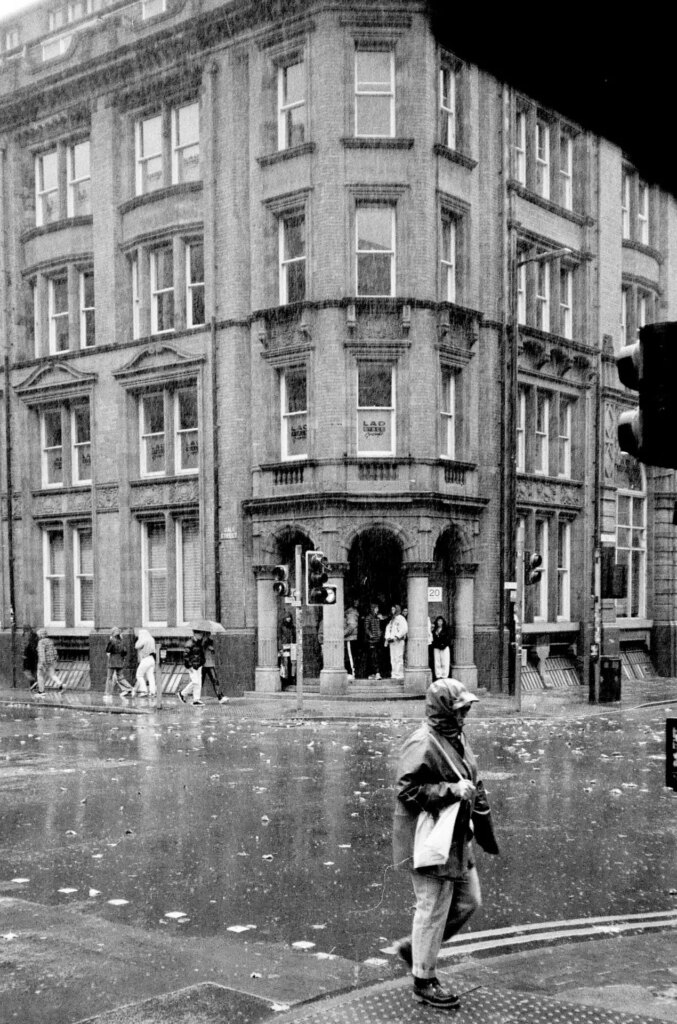
What do I take with me?
The most obvious thing is a fully waterproof jacket or coat and stout boots, however I have 100% not even done this before and just got soaked through my clothes! I feel like I am usually prepared to accept that I will just get wet, then I can relax a bit more and focus on taking photos. However, I always have a Plan B prepared, such as an alternate route home, or safe place to rest. I never put myself in a dangerous position just for some photos – it’s never worth it, and the emergency services would think I’m an idiot for trying.
Disclaimer: I’m mainly talking about street or travel photography, so if you are thinking of adventures up a mountain in a storm then please consult an expert or guide to help you not get killed in extreme weather conditions.
The next thing is that I take a few dry cloths/handkerchiefs/lint-free items to wipe down my camera and lens. I usually have a big cotton handkerchief that I use to wipe off the worst of the rain, then if I find a dry place I’ll specifically wipe the lens with a lint-free cloth. Finding a dry place of shelter is also important for changing your film, as you always want to avoid getting any rain actually into your camera.
You might also want to consider adding a Neutral Colour Filter to the front of your lens before you set off. I use a brand new Nikon 52mm NC filter for my 50mm f/1.8, and it provides general protection against strong reflections, scratches, dust and moisture. I usually have it on all the time for half the year when the weather is unpredictable and often rainy. It makes a barely imperceptible difference to my pictures, so don’t believe the Reddit trolls.
I keep my SLR around my neck, but tuck it underneath my waterproof if I’m just walking to my next spot. I usually also have a compact camera, currently the Olympus XA, which is tucked into my coat pocket. When I first started getting interested in film photography again during the pandemic, I used a cheap focus-free plastic point-and-shoot camera and that worked a treat with black and white film, especially when it was very rainy for my government-mandated daily exercise. More importantly it didn’t matter if I did damage that cheap point-and-shoot, as it was not a high-risk piece of equipment, so I was able to forget worrying about it and instead keep my eyes up and looking around for things to photograph. To be fair though, I do not worry about my Nikon FM2 as I am very confident in how robust, rugged, and unbothered it is by changes in temperature, or weather conditions.
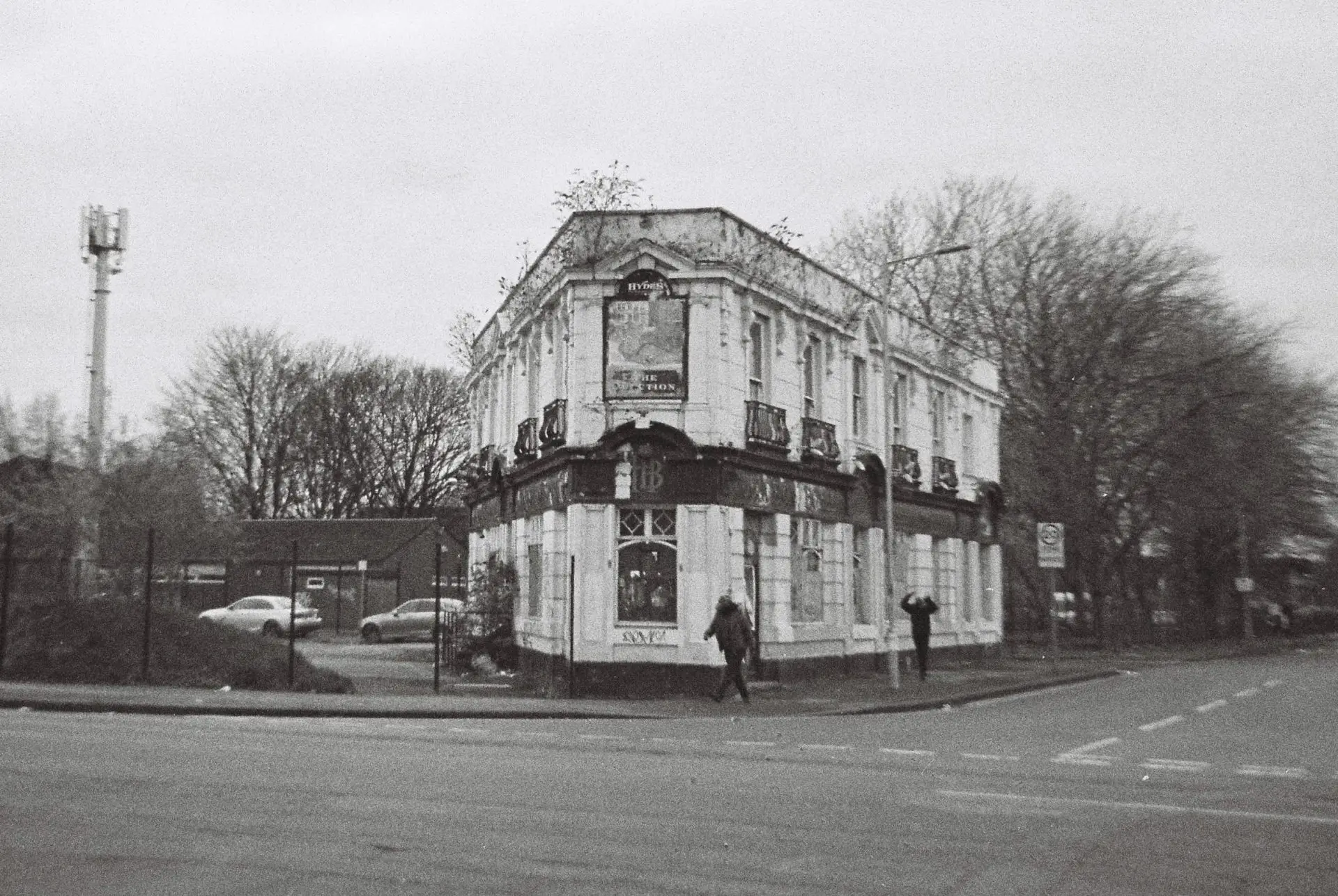
How is it different?
Well firstly I notice that I get more stubborn when out taking photos in the rain. That might just be my personality, but I can see it on other people’s faces too, that kind of defiant ‘I will not be defeated by rain!’ look that could also be the ‘Oh well! I’m already soaked, may as well carry on’ attitude. I feel like nature or wildlife photographers are like this, and they must have serious mental stamina to sit in a hide most of the day only to be rewarded with the backside of a heron! Seriously though, there is something rewarding about having had to struggle a bit more to get my photos, especially when I have pre-visualised what I want to try and capture, and when I get my scans back from the lab it basically doubles the dopamine-reward levels.
In practice I find that being out in rainy conditions makes me more noticeable as a hobbyist. In a way this has turned out to be good, because most folks dismiss me immediately as just being a photography enthusiast. This means I can usually get half-decent candid shots of people around the city, however I don’t stop and ask people for a portrait when it’s raining because most people just want to get to where they are going!
There is more of an energy and purpose to people when it is raining. This can come across in photos with motion blur, as it adds that effect of movement to the picture. This can also come across in the limitations or compromises you have to make as a film photographer in these conditions. When the clouds gather and it rains the sun is blocked out and diffused by those clouds. This can sometimes result in it looking like there are no clouds at all, or if they are very dark, then it brings all things in the frame together with reduced contrast.
Most folks in this situation would push film in order to get more stable shutter speeds handheld, and I tend to agree, however it’s not always essential for me to freeze the action perfectly from an artistic point of view. I find that I have to stabilise my camera by pressing my arms/elbows into my chest, or leaning against something to get consistent exposures. In other examples of low light or rainy photography folks are using a tripod and this is something I might explore in future for sharper more precise pictures.
Later on, when I get home, I make sure that my camera has no lens caps on and the used film is taken out, so I can lay them out in my living room. The change in air temperature can cause condensation to build up the camera, so give it a few hours to acclimatise when you get home. I’ve got spooked before thinking that my NC filter wouldn’t come off, but I just needed to leave it to adjust to the inside temperature. This is also why I try not to keep my camera hidden under my coat all the time, because of the risk of more condensation getting into the camera itself – whereas, I can just wipe off surface rain with a cloth during the day, and air things out later.
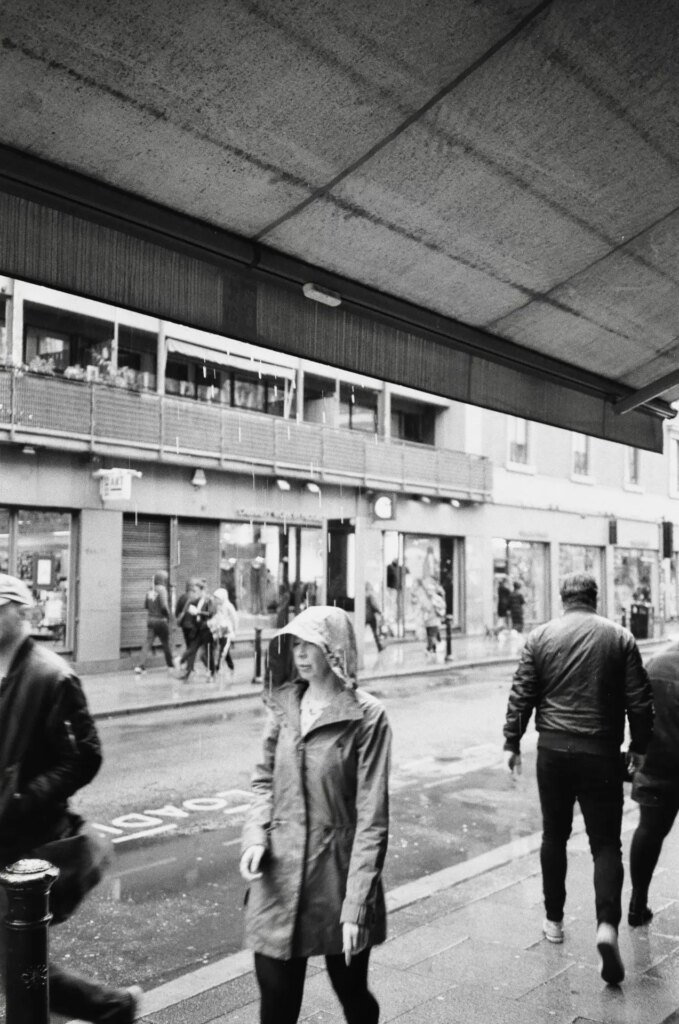
What are the results like?
I really enjoyed getting these rainy photos back from the lab, because I think they capture the level of energy and human dynamics that I saw when I was out taking them. They reflect something about the place I live in, and how we all experience the same city differently. Much like Simon King urges in another article here on 35mmc, I want to encourage you to go out and try shooting film in ‘less than ideal’ conditions, as the results might surprise you. So if you fancy getting out of your comfort zone, try popping on your big coat and going out for a walk with your camera the next time it rains – who knows, you might even enjoy the experience of it! I know that I certainly enjoy getting home afterwards and making a big mug of tea to cosy up on the sofa, so always keep that in mind too when you’re getting splashed by a taxi haha!
Here are a few more B&W pictures from my rainy-day photo walks:
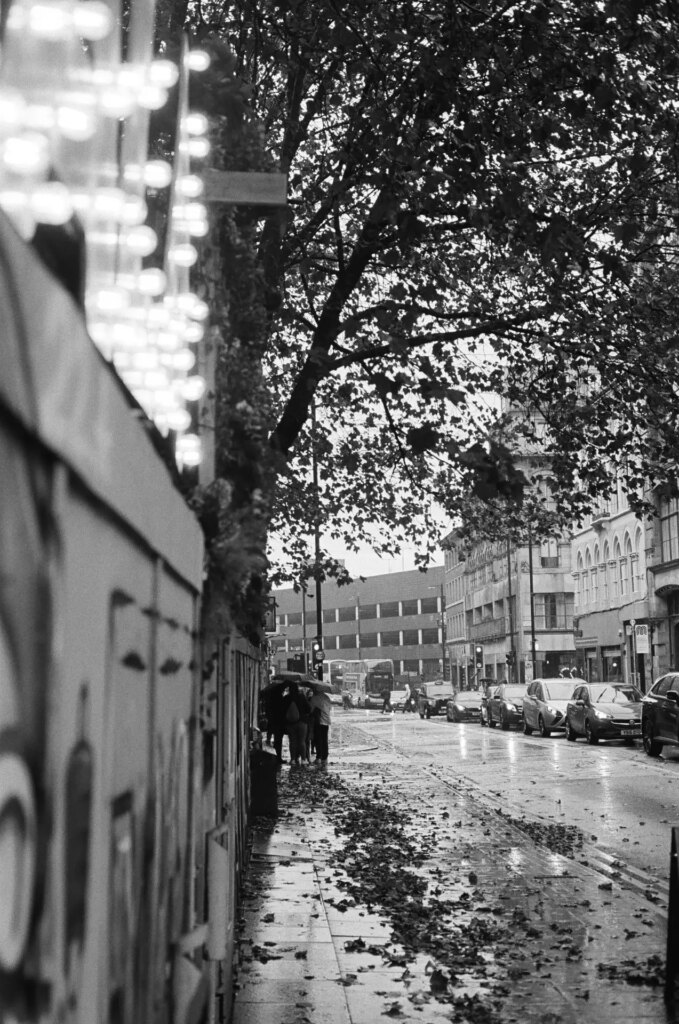
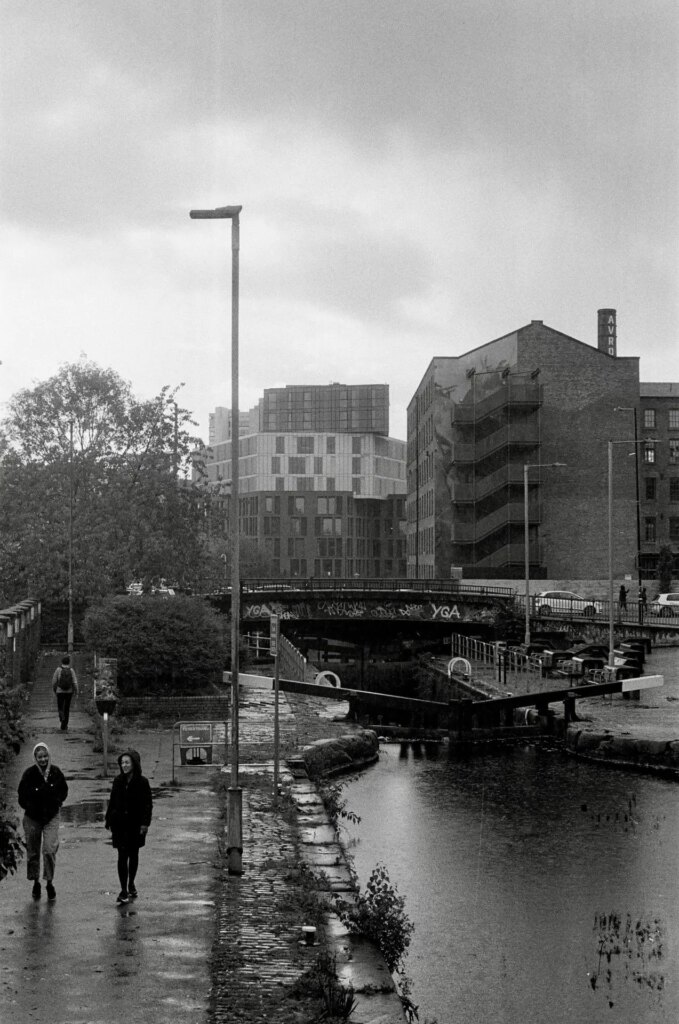
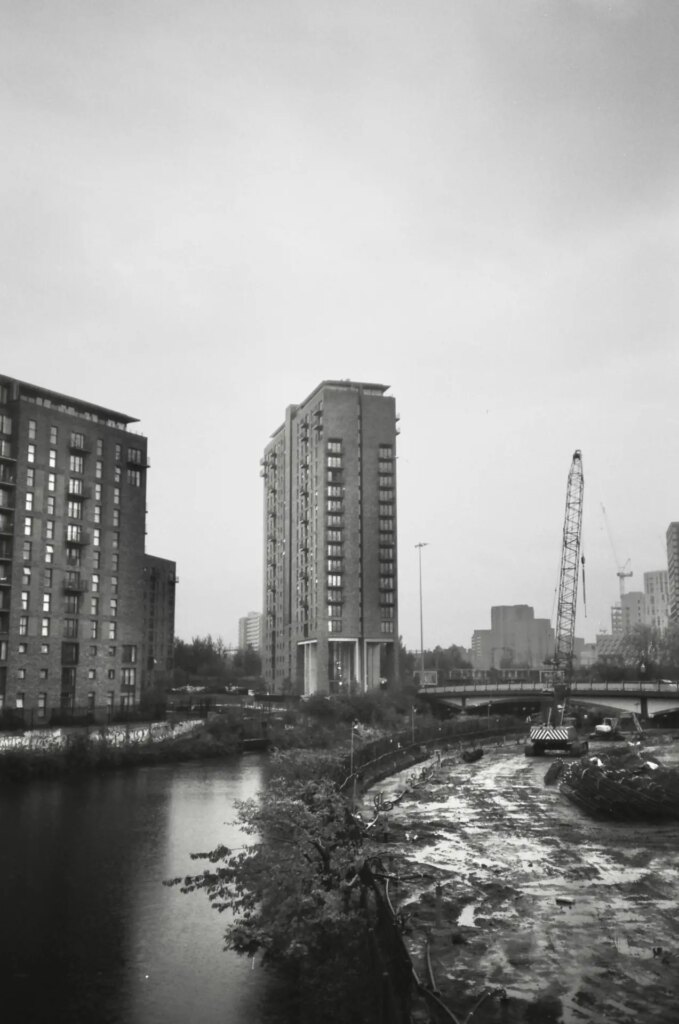
My pictures included in this article are all B&W, so it might interest you to read other related 35mmc community articles about rainy weather and colour film here:
5 Frames with Portra 800 in a Rain Soaked Minolta Dynax 5 – by Robert
5 Frames in the Rain – Portra 160 in a Nikonos III – by David
Can you suggest any other famous photographers who used rain as part of their subject? How do you use rain as part of the subject of your own photos? Do you have any further tips on gear or film choice for shooting in rainy conditions?
All scans were developed and processed by Come Through Lab in Ancoats, Manchester.
Find them on instagram here: @comethroughlab
Thanks for reading, and I look forward to sharing more of my photos and experiences with this community soon.
You can find me on Instagram: @tedayre
Share this post:
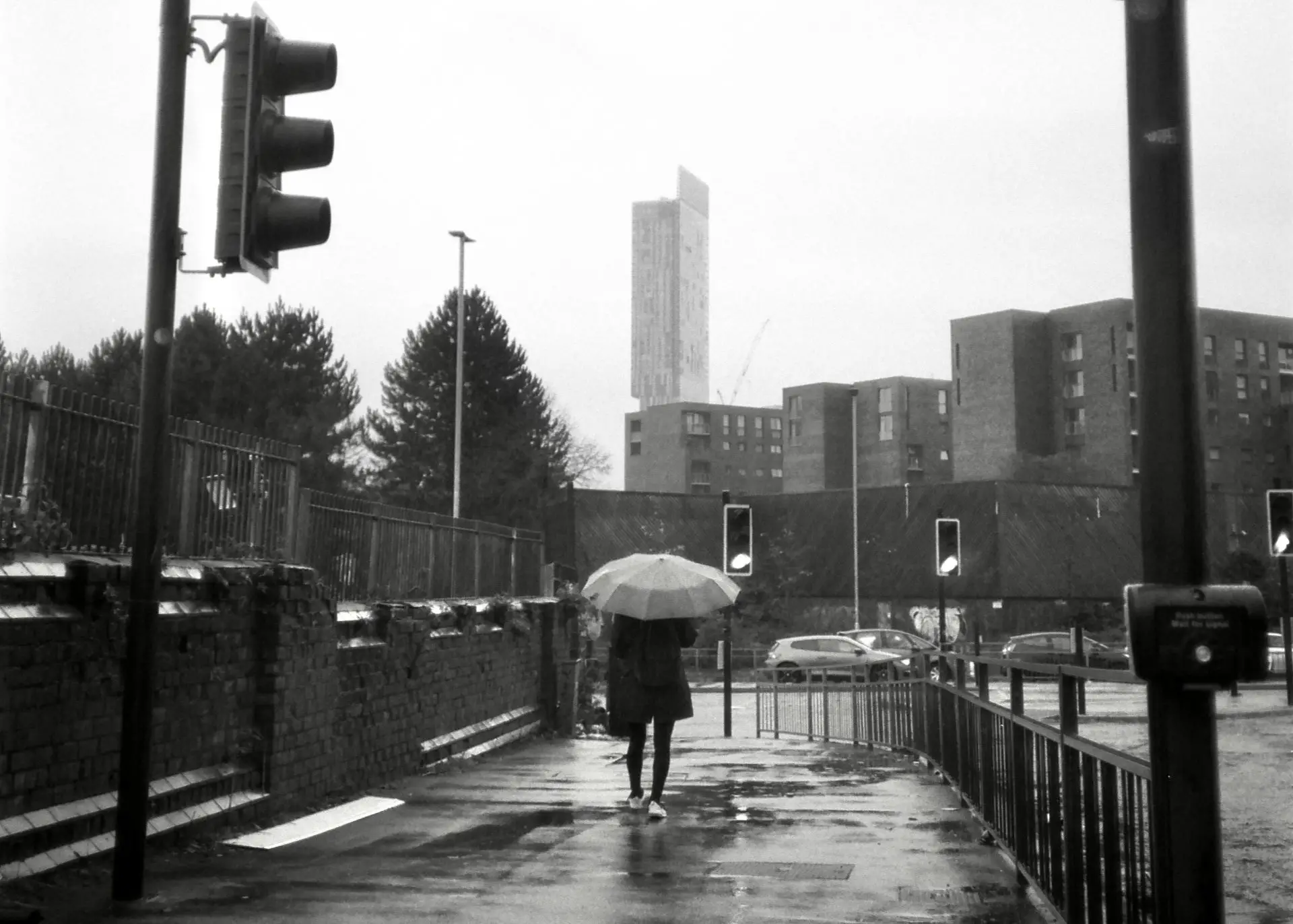








Comments
John Fontana on Gear Theory – Shooting Film in the Rain – By Ted Ayre
Comment posted: 10/01/2023
Comment posted: 10/01/2023
Agata Urbaniak on Gear Theory – Shooting Film in the Rain – By Ted Ayre
Comment posted: 10/01/2023
Comment posted: 10/01/2023
Eric Norris on Gear Theory – Shooting Film in the Rain – By Ted Ayre
Comment posted: 10/01/2023
Comment posted: 10/01/2023
Peter Kay on Gear Theory – Shooting Film in the Rain – By Ted Ayre
Comment posted: 10/01/2023
Comment posted: 10/01/2023
Reed George on Gear Theory – Shooting Film in the Rain – By Ted Ayre
Comment posted: 10/01/2023
I wonder if you have any thoughts on how to determine the best shutter speed to show or hide rain or snow streaks? I know it depends on focal length, distance, and probably many other things. Is bracketing the only way to ensure that you get the effect you want?
Best,
Reed
Comment posted: 10/01/2023
Michael Jardine on Gear Theory – Shooting Film in the Rain – By Ted Ayre
Comment posted: 10/01/2023
Michael J on Gear Theory – Shooting Film in the Rain – By Ted Ayre
Comment posted: 11/01/2023
Comment posted: 11/01/2023
Castelli Daniel on Gear Theory – Shooting Film in the Rain – By Ted Ayre
Comment posted: 11/01/2023
A nice read. I’ve got say that your corner of paradise really gets a pounding. I saw an exhibit of Martin Parr’s weather photos and he revealed that he resorted to using a Nikonos III for his Ireland shots b/cause he didn’t want to ruin his Leica in the intense rain.
I found most rain gear leaks. Truly waterproof gear can leave you drenched because you sweat and some fabric doesn’t ‘breathe’. The really, really good foul weather gear is $$$. One thing I’d recommend is a pair of shoes with non-skid soles. I found out the hard way that cobblestones can be very slippery when wet.
Your photos succinctly capture how we react to rain. I like the series and hope to see more of your work. Just stay dry.
Comment posted: 11/01/2023
Lee on Gear Theory – Shooting Film in the Rain – By Ted Ayre
Comment posted: 11/01/2023
Comment posted: 11/01/2023
Comment posted: 11/01/2023
Comment posted: 11/01/2023
Comment posted: 11/01/2023
Comment posted: 11/01/2023
Bill Brown on Gear Theory – Shooting Film in the Rain – By Ted Ayre
Comment posted: 11/01/2023
I mostly use weather as a backdrop in my shots. Clouds at the front and end of storms can be quite dramatic, at least here in Texas. We don't experience the constant daily rain but more fast moving thunderstorms. I used to motorcycle tour in the late 1970's and a camera was always at the ready for those moments when rain and sunlight interacted. Two of my favs were shot the same day in Wyoming as I drove through a steady rain. One has a beautiful double rainbow with the main rainbow arching down into my motorcycle parked at the side of the road. The rainbow actually ended in the field right next to where I stopped! The second was a short time later and the light was reflecting off the highway creating what my mind saw as a silver ribbon winding towards the mountains in the distance with my motorcycle once again on the side of the road. I was standing in the middle of the road and shooting handheld so always be aware of your surroundings.
Thanks for the great article and pics. I think my fav is the one with the out-of-focus sign bulbs and the group of umbrella covered individuals huddled down the street with reflections on the wet pavement. Lots of feeling in that one. I look forward to your next story in this series. Best.
Comment posted: 11/01/2023
Andy Hinson on Gear Theory – Shooting Film in the Rain – By Ted Ayre
Comment posted: 11/01/2023
Comment posted: 11/01/2023
Gary on Gear Theory – Shooting Film in the Rain – By Ted Ayre
Comment posted: 12/01/2023
Comment posted: 12/01/2023